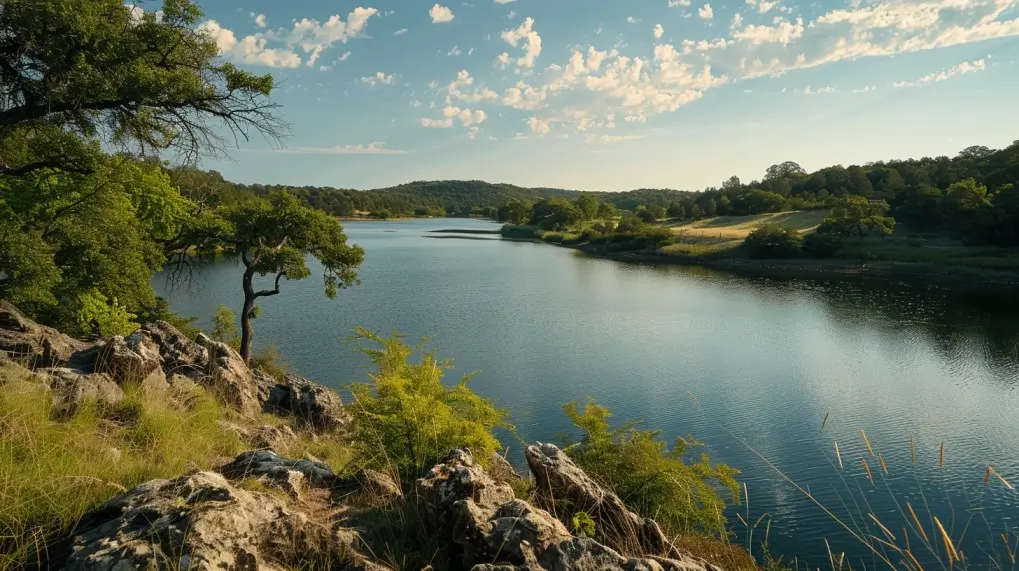Inks Lake State Park offers an exceptional fly fishing experience for anglers seeking to target a variety of species, including largemouth bass, Guadalupe bass, sunfish, white bass, striped bass, and catfish. With its diverse habitats, strategic fish structures, and accessible shoreline, the park provides a prime destination for fly fishing enthusiasts.
Exploring the Fishing Opportunities at Inks Lake State Park
Inks Lake State Park is renowned for its diverse fish populations, making it a popular destination for fly fishing enthusiasts. The park features two fishing piers and allows shoreline fishing, making it easily accessible for anglers of all skill levels. Whether you’re a seasoned fly fisher or a beginner, Inks Lake State Park has something to offer.
Targeting Largemouth Bass and Guadalupe Bass
Fly fishing for largemouth bass can be particularly rewarding at Inks Lake State Park. Anglers can find success by targeting the rocky banks, using topwater lures, metal flake willow leaf spinnerbaits, and shallow- to medium-depth crankbaits. Flipping boat docks with jigs and plastic worms can also be a productive technique.
In addition to largemouth bass, the park is home to the Guadalupe bass, a unique and sought-after species. These fish can be found in the park’s clear waters and rocky habitats, providing an exciting challenge for fly fishers.
Catching Sunfish, White Bass, and Striped Bass
Inks Lake State Park is also a prime destination for catching sunfish, such as bluegill and redbreast sunfish. These fish can be targeted using mealworms, crickets, or pieces of earthworms fished under floats along the shoreline. The larger sunfish can often be found in slightly deeper water without the use of a float.
As the spawning season approaches, typically from February onwards, white bass begin congregating in the upper end of the reservoir. Productive lures for white bass include twister tail jigs, small hair jigs, small crankbaits, and small topwaters. Live bait fishing with minnows is also effective and often catches crappie simultaneously.
Striped bass and hybrid stripers are also present in the lake, and anglers can target these species with the help of local fishing guides like Jackie Headrick, who specializes in this type of fishing.
Targeting Catfish with Fly Fishing Techniques
Inks Lake State Park is home to both channel and flathead catfish, which can be targeted using fly fishing techniques. Stinkbaits and cutbaits work well for channel cats, while live bait is preferred for large flathead catfish.
Preparing for a Successful Fly Fishing Experience

To ensure a rewarding fly fishing experience at Inks Lake State Park, consider the following tips:
- Research the Best Fishing Spots: Utilize park maps, fishing regulations, and local guides to identify the most productive fishing locations within the park.
- Obtain Necessary Licenses and Permits: Make sure to have a valid fishing license and any additional permits required for fishing in Texas state parks.
- Review Fishing Regulations: Familiarize yourself with statewide fishing regulations, as well as any specific rules that apply to Inks Lake State Park.
- Time Your Visit for Peak Fishing Seasons: Plan your trip to coincide with the best times for targeting specific species, such as white bass in the spring or largemouth bass throughout the year.
- Use Appropriate Gear and Techniques: Select the right rods, reels, lines, and flies for the species you are targeting and the conditions you will be fishing in.
By following these tips and taking advantage of the park’s diverse fishing opportunities, fly fishing enthusiasts are sure to have a memorable and rewarding experience at Inks Lake State Park.
Conclusion
Inks Lake State Park is a premier destination for fly fishing enthusiasts, offering a wide range of species and diverse habitats to explore. Whether you’re targeting largemouth bass, Guadalupe bass, sunfish, white bass, striped bass, or catfish, the park provides ample opportunities for a successful and enjoyable fly fishing adventure. By planning your visit, obtaining the necessary permits, and using the right gear and techniques, you can make the most of your time at this exceptional state park.

